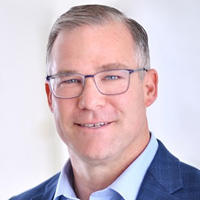This Year’s Benefits Open Enrollment Period Is an Opportunity You Don’t Want to Miss
Plan ahead to do a deep dive into the benefits your employer offers. Given what we’ve been through so far in 2020, you may need them!


With COVID-19 expected to be a part of our daily lives for the foreseeable future, many Americans are expecting that they could get sick. In fact, Voya research shows that more than half of Americans (52%) believe someone close to them will be infected with the virus. At the same time, many are also discovering — often to their surprise — that their medical insurance has coverage gaps, so if they do find themselves needing care, they might need to dip into their personal or emergency savings to make up the difference.
With the fall open enrollment season approaching, so too is the opportunity to take advantage of previously untapped benefits offered by your employer. In fact, many are now paying closer attention to their workplace benefits during these uncertain times. New Voya research finds that nearly 7-in-10 employees (71%) plan to spend more time reviewing their voluntary benefits as a result of COVID-19 than they did during the last enrollment period. And more than half (53%) plan to make changes to their benefits coverages offered through their employer.
While understanding benefits offerings can sometimes require a little extra “homework,” there are many products that you can access that could provide greater coverage, while keeping costs affordable. Below are three tips to consider to help maximize this opportunity:
From just $107.88 $24.99 for Kiplinger Personal Finance
Become a smarter, better informed investor. Subscribe from just $107.88 $24.99, plus get up to 4 Special Issues

Sign up for Kiplinger’s Free Newsletters
Profit and prosper with the best of expert advice on investing, taxes, retirement, personal finance and more - straight to your e-mail.
Profit and prosper with the best of expert advice - straight to your e-mail.
Start thinking about your workplace benefits now
Research shows employees only spend 17 minutes electing their benefits, while Netflix users spend an average of 18 minutes deciding what to watch. I get it, everyone is busy — especially in the midst of a global pandemic. But even if your employer hasn’t yet provided details on this year’s offerings, consider getting a jump-start on your homework by checking your company’s benefits materials from last year to get up to speed on what options you might have available this year.
For example, if your company offers group life insurance, see if there are options to increase your coverage amount or add coverage for a spouse. Also, give some thought to changes you may be expecting in 2021 that could impact your benefits needs, like maybe a new baby or dependent in the family. And see if you can find out how open enrollment materials will be shared this year and how you can get more information once open enrollment begins. While many companies are operating with few employees in offices this year, some may provide virtual enrollment benefits fairs and more digital support (e.g., webinars, on-demand videos, Zoom calls, etc.). Plus, personalized online tools and digital assistants can help you better estimate your out-of-pocket expenses.
Supplemental, or voluntary, benefits can help fill an insurance gap
Voya’s own customer data shows that more than 4-in-10 retirement plan participants (44%) have protection or insurance gaps in their coverage. This could put you in a challenging financial situation if you get hit with an unexpected medical expense. For example, the average cost of one day in the hospital in the U.S. is approximately $2,400, with the average patient staying more than four days, according to data from the Kaiser Family Foundation.
Supplemental health insurance products offered through your employer can provide additional protection, and typically at a cost lower than what most people may expect. The cost for hospital indemnity insurance, for example, which pays a daily benefit when you have a covered stay in a hospital, averages between $250 to $300 per year — that’s less than a dollar per day. Plus, voluntary benefits can be particularly useful for more than medical bills. Accident insurance benefits, for example, can be used to pay for anything from living expenses — utility bills, pizza delivery or dog walking — to rides to your next doctor’s appointment. When you experience a qualified accident, that claim payment is yours to spend how you like and need.
HSAs can help pay for unexpected medical costs
A health savings account (HSA) is a medical savings account that is available to employees when they are enrolled in a high-deductible health plan (HDHP). HSAs are funded by pre-tax dollars that are deposited into your account by you or your employer, usually through a payroll deduction. Unlike flexible spending accounts (FSAs), HSAs are not “use-it-or-lose-it” accounts, and your balance carries over each year. Also, unlike your health insurance plan and your FSA, which are generally tied to your employment, your HSA is portable — meaning you own the account. Therefore, if you get laid off or furloughed from your job as result of the COVID-19 pandemic, you can always use your HSA funds to help pay for qualified medical costs. And when you enroll in an HSA, some employers will provide some funding to your account as well.
Plus, HSAs offer triple tax advantages:
1. Contributions are pre-tax and reduce your taxable income.
2. Your HSA funds grow tax-free.
3. When used to pay for eligible medical expenses, HSA withdrawals are tax-free.
Therefore, if your employer offers a HDHP, don’t overlook the benefits of contributing to an HSA. The COVID-19 pandemic has shined a spotlight on the need to be prepared for unexpected medical costs, and HSAs can be a valuable workplace benefit to help protect your family. And if you don’t use the funds this year, or even next, your HSA can be a resource for funding medical expenses in retirement.
In summary, if the COVID-19 pandemic has taught us anything, it’s that we need to be ready for the unexpected. While there are no guarantees in life, making the deliberate decision to focus on your workplace benefits during this fall’s open enrollment season is something each of us can control. Sure, it will likely require a little more effort, but it’s an opportunity you don’t want to miss.
Profit and prosper with the best of Kiplinger's advice on investing, taxes, retirement, personal finance and much more. Delivered daily. Enter your email in the box and click Sign Me Up.

Rob Grubka is chief executive officer of Health Solutions for Voya Financial. In this role, he is responsible for product development and management, distribution and the end-to-end customer experience for Voya’s stop loss, group life, disability and supplemental health insurance solutions, as well as health savings and spending accounts, offered to U.S. businesses and covering more than 7 million individuals through the workplace.
-
 States That Tax Social Security Benefits in 2026
States That Tax Social Security Benefits in 2026Retirement Tax Not all retirees who live in states that tax Social Security benefits have to pay state income taxes. Will your benefits be taxed?
-
 QUIZ: What Type Of Retirement Spender Are You?
QUIZ: What Type Of Retirement Spender Are You?Quiz What is your retirement spending style? Find out with this quick quiz.
-
 How to Avoid the Financial Quicksand of Early Retirement Losses
How to Avoid the Financial Quicksand of Early Retirement LossesSequence of returns — experiencing losses early on — can quickly deplete your savings, highlighting the need for strategies that prioritize income stability.
-
 This Is How Early Retirement Losses Can Dump You Into Financial Quicksand (Plus, Tips to Stay on Solid Ground)
This Is How Early Retirement Losses Can Dump You Into Financial Quicksand (Plus, Tips to Stay on Solid Ground)Sequence of returns — experiencing losses early on — can quickly deplete your savings, highlighting the need for strategies that prioritize income stability.
-
 How an Elder Law Attorney Can Help Protect Your Aging Parents From Financial Mistakes
How an Elder Law Attorney Can Help Protect Your Aging Parents From Financial MistakesIf you are worried about older family members or friends whose financial judgment is raising red flags, help is out there — from an elder law attorney.
-
 Q4 2025 Post-Mortem From an Investment Adviser: A Year of Resilience as Gold Shines and the U.S. Dollar Dives
Q4 2025 Post-Mortem From an Investment Adviser: A Year of Resilience as Gold Shines and the U.S. Dollar DivesFinancial pro Prem Patel shares his take on how markets performed in the fourth quarter of 2025, with an eye toward what investors should keep in mind for 2026.
-
 Is Your Emergency Fund Running Low? Here's How to Bulk It Back Up
Is Your Emergency Fund Running Low? Here's How to Bulk It Back UpIf you're struggling right now, you're not alone. Here's how you can identify financial issues, implement a budget and prioritize rebuilding your emergency fund.
-
 An Expert Guide to How All-Assets Planning Offers a Better Retirement
An Expert Guide to How All-Assets Planning Offers a Better RetirementAn "all-asset" strategy would integrate housing wealth and annuities with traditional investments to generate more income and liquid savings for retirees.
-
 7 Tax Blunders to Avoid in Your First Year of Retirement, From a Seasoned Financial Planner
7 Tax Blunders to Avoid in Your First Year of Retirement, From a Seasoned Financial PlannerA business-as-usual approach to taxes in the first year of retirement can lead to silly trip-ups that erode your nest egg. Here are seven common goofs to avoid.
-
 How to Plan for Social Security in 2026's Changing Landscape, From a Financial Professional
How to Plan for Social Security in 2026's Changing Landscape, From a Financial ProfessionalNot understanding how the upcoming changes in 2026 might affect you could put your financial security in retirement at risk. This is what you need to know.
-
 6 Overlooked Areas That Can Make or Break Your Retirement, From a Retirement Adviser
6 Overlooked Areas That Can Make or Break Your Retirement, From a Retirement AdviserIf you're heading into retirement with scattered and uncertain plans, distilling them into these six areas can ensure you thrive in later life.